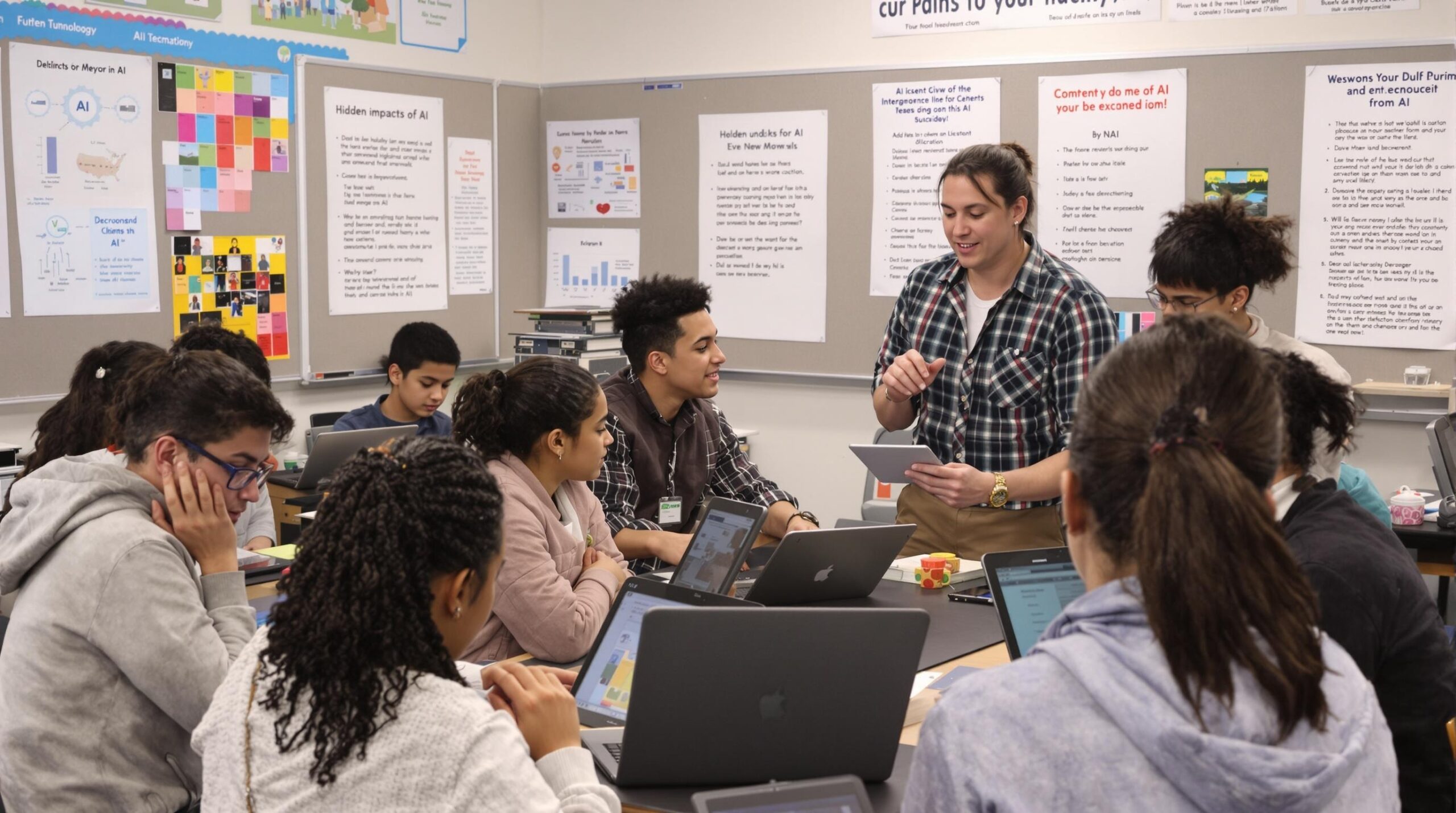The integration of artificial intelligence (AI) into education systems has grown exponentially over the last decade. These innovations often spark excitement and debate. However, beneath the surface, AI is reshaping how schools, teachers, and students interact with learning in remarkable and sometimes unnoticed ways. Understanding these hidden impacts is essential for educators, students, and families alike.
Personalized Learning Redefined by Algorithms
AI-driven platforms now analyze student performance data almost instantly. Through this analysis, they recommend personalized learning paths tailored to each student’s strengths and weaknesses. Instead of a one-size-fits-all approach, students receive content suited to their learning pace. As a result, learners encounter fewer knowledge gaps and often feel more engaged. Adaptive quizzes, automated feedback, and recommended resources help transform learning from passive to active experiences.
However, the algorithms that power these smart systems often go unexamined. If left unchecked, subtle biases within these algorithms may reinforce inequities rather than resolve them. Ensuring that personalization remains fair and balanced requires constant oversight and transparency from both developers and educators.
AI as a Crucial Aid for Teachers
The daily workload of teachers can be overwhelming. AI-powered tools, such as grading assistants and data dashboards, are quietly revolutionizing classroom management. They automate routine tasks, freeing educators to focus on creative and meaningful student interactions. Analysis of student engagement data can also reveal who might need extra help, making interventions more timely and effective.
This hidden assistance often improves teacher morale and reduces burnout rates. Many educators report feeling more supported and less isolated in their roles. Nevertheless, overreliance on automated suggestions can limit creative teaching approaches. Teachers must balance AI insights with professional judgment to maximize learning outcomes.
Professional Development and Skills Enhancement
The rapid advancement of AI also requires teachers to update their skills continually. Digital literacy is now essential for both educators and students. Hidden within these changes are new opportunities for teacher training and ongoing professional development. Online AI-powered platforms can recommend specific training modules based on teacher performance and classroom needs. Ultimately, this helps educators stay ahead of technological trends and deliver better lessons.
Reimagining Assessment and Feedback
Traditional assessments often come with delays and occasional inconsistencies. AI can transform how assessments are conducted and interpreted. With automated grading systems, assignments are evaluated within moments. Students receive immediate feedback, which enables continuous improvement and greater mastery of concepts. Truly formative assessments, driven by AI, can now happen daily in classrooms worldwide.
AI-driven feedback also identifies patterns and learning gaps that might otherwise go unnoticed. Teachers can then adapt instruction to address these areas quickly. Still, concerns remain about the authenticity of machine feedback. Human oversight ensures that the educational process remains empathetic and supportive alongside AI advancements.
Accessibility: Bridging Educational Divides
AI technology is quietly making education more accessible for students with diverse needs. Speech-to-text software assists those with physical or learning disabilities in participating fully. Language translation tools help non-native speakers engage with classroom content. These systems remove traditional barriers and foster an inclusive environment for all learners.
Some adaptive learning platforms also offer real-time adjustments for students with cognitive or sensory processing differences. By monitoring performance indicators, these tools customize the delivery method or pace to suit individual needs. These subtleties often operate in the background but can dramatically enhance educational participation and outcomes.
Data Privacy and Ethical Concerns
Behind every AI recommendation or automated grade, there is an infrastructure powered by massive amounts of student data. The use of sensitive data introduces privacy risks and ethical considerations for schools. Ensuring strict protections is essential, but this aspect often remains hidden from everyday view. Policies regarding data retention, transparency, and consent must continue to evolve alongside AI developments.
Furthermore, algorithmic decision-making in education may unintentionally embed or perpetuate bias. If historical data reflects educational inequalities, AI systems may reinforce these divides. Ongoing audits and diverse data sources can mitigate some ethical risks as AI becomes more embedded in classrooms.
Transforming Administrative Operations
The influence of AI extends beyond classroom instruction. School administration benefits from AI in scheduling, resource allocation, and student enrollment. Automated scheduling systems optimize timetables and ensure that facilities are used most efficiently. Pattern recognition within enrollment data helps administrators anticipate future needs and adjust programs accordingly.
These changes improve school operations behind the scenes. They reduce bottlenecks and ensure resources reach where they are most needed. As AI continues to evolve, administrators will need to adapt their decision-making processes to fully leverage these advantages.
Parental Engagement and Communication
AI chatbots and communication platforms enable schools to connect with families more efficiently than ever before. Automated updates keep parents informed about assignments, attendance, and performance. While these tools often work behind the scenes, they foster transparency and enhance parental involvement in student success.
Shaping Future Educational Paradigms
The hidden impacts of AI are already influencing the future of education. Concepts like lifelong learning and micro-credentialing become possible with adaptive, AI-powered platforms. Students can access personalized resources anytime and anywhere, making education more fluid and responsive to global trends. As these innovations take root, traditional boundaries between school, home, and workplace learning will blur.
To harness AI’s transformative potential, all stakeholders must remain engaged and informed. Collaboration between technology developers, educators, parents, and policymakers will ensure AI creates more opportunity than risk. Transparent discussions and responsible development will keep education equitable and responsive to student needs.
Conclusion: Illuminating the Unseen
AI is influencing education in subtle but powerful ways that are often overlooked. From supporting teachers to enhancing accessibility, AI’s hidden impacts are shaping the classroom of the future. Responsible oversight and engagement will be crucial to direct these changes positively. Educators, families, and technologists must work together to illuminate and maximize the unseen benefits, while safeguarding equity and privacy for all learners.

